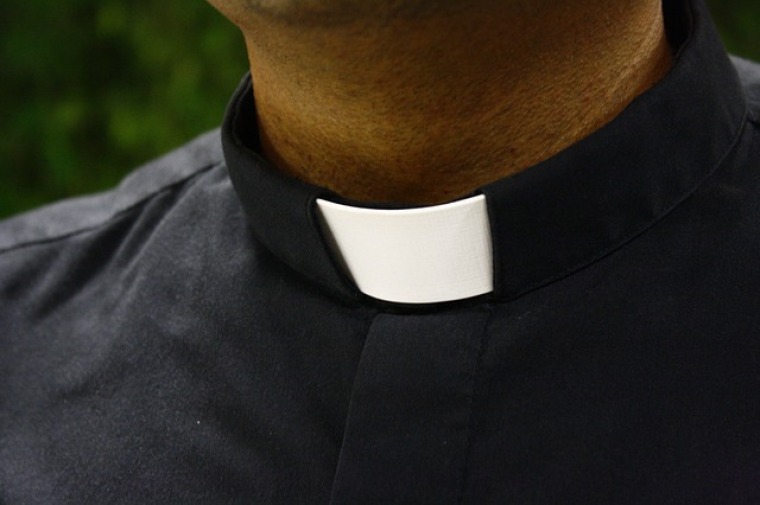US Catholic Church sees increase in seminarians as millennials show interest in joining priesthood

While the Catholic Church is struggling to address the shortage of priests across the world, seminaries in America are seeing a resurgence as millennials express more interest in joining the priesthood.
Polls and statistics have shown that millennials are the most likely generation to stray from the Catholic faith. But millennials in the U.S. appear to be defying the polls, as they become the source of the sudden increase in the number of seminarians across the country.
In Ohio, the Mount St. Mary's Seminary at The Athenaeum of Ohio is constructing a new building to make room for new apartments and conference rooms to accommodate more seminarians. The new building will be the first expansion of the seminary's Mount Washington Campus in almost 60 years.
Enrollment at the seminary plummeted from about 200 in the 1960s to less than 40 in 2011, but enrollment surged in 2012 and it has more than doubled since that time.
A total of 82 seminarians are studying there today, with millennials, or those roughly between the ages of 18 and 34, making up the vast majority of new recruits. In the past, seminarians in their 30s and 40s once dominated their ranks, but the average age now is 28.
The increase was also seen in other parts of the country, though not as dramatic as the one seen in the Athenaeum. Nationally, three out of four seminarians are aged 34 years or below, according to Crux.
Some of the young seminarians believe that they are part of a counter-culture movement that is pushing back against forces that are making America a less faithful notion.
"We're going to be preaching the Gospel to a culture that's badly in need of it," said Jarred Kohn, a 27-year-old from Coldwater, Ohio, who will be ordained this spring. "Trying to beat a culture is going to be difficult, but we can win it back," he added.
Some seminarians are now also struggling to justify their decision to join the priesthood to their families.
"Years ago, if a family produced a priest, the whole family got to share in that," said Father Dan Schmitmeyer, who is responsible for recruiting priests for the archdiocese. "Now we have families that get very angry at them. They have friends who no longer talk to them," he added.
Kohn, who worked as a welder before joining the seminary, said that his mother had initially expressed concern about his decision because she thought that he would not be happy. Her hesitance eventually died down and she is now sewing the vestments that Kohn will use when he becomes a priest. "She's all in now," Kohn said.
Despite the sudden surge in seminarians, the Church is still facing several challenges in recruiting for the priesthood.
Data from the Center for Applied Research in the Apostolate at Georgetown University has shown that the Catholic Church has been increasingly turning to Africa and Asia to find priests to staff its parishes in the U.S., Europe and other parts of the world because it has been experiencing difficulties in finding native priests.
The center has also found that attendance at churches has fallen from about 55 percent in 1965 to 22 percent last year.
 Christians don't have to affirm transgenderism, but they can’t express that view at work: tribunal
Christians don't have to affirm transgenderism, but they can’t express that view at work: tribunal Archaeology discovery: Medieval Christian prayer beads found on Holy Island
Archaeology discovery: Medieval Christian prayer beads found on Holy Island Presbyterian Church in America votes to leave National Association of Evangelicals
Presbyterian Church in America votes to leave National Association of Evangelicals Over 50 killed in 'vile and satanic' attack at Nigerian church on Pentecost Sunday
Over 50 killed in 'vile and satanic' attack at Nigerian church on Pentecost Sunday Ukrainian Orthodox Church severs ties with Moscow over Patriarch Kirill's support for Putin's war
Ukrainian Orthodox Church severs ties with Moscow over Patriarch Kirill's support for Putin's war Islamic State kills 20 Nigerian Christians as revenge for US airstrike
Islamic State kills 20 Nigerian Christians as revenge for US airstrike Man who served 33 years in prison for murder leads inmates to Christ
Man who served 33 years in prison for murder leads inmates to Christ


 Nigerian student beaten to death, body burned over ‘blasphemous’ WhatsApp message
Nigerian student beaten to death, body burned over ‘blasphemous’ WhatsApp message 'A new low': World reacts after Hong Kong arrests 90-year-old Cardinal Joseph Zen
'A new low': World reacts after Hong Kong arrests 90-year-old Cardinal Joseph Zen Iran sentences Christian man to 10 years in prison for hosting house church worship gathering
Iran sentences Christian man to 10 years in prison for hosting house church worship gathering French Guyana: Pastor shot dead, church set on fire after meeting delegation of Evangelicals
French Guyana: Pastor shot dead, church set on fire after meeting delegation of Evangelicals ‘Talking Jesus’ report finds only 6% of UK adults identify as practicing Christians
‘Talking Jesus’ report finds only 6% of UK adults identify as practicing Christians Mission Eurasia ministry center blown up in Ukraine, hundreds of Bibles destroyed: 'God will provide'
Mission Eurasia ministry center blown up in Ukraine, hundreds of Bibles destroyed: 'God will provide' Church holds service for first time after ISIS desecrated it 8 years ago
Church holds service for first time after ISIS desecrated it 8 years ago Burger King apologizes for 'offensive campaign' using Jesus' words at the Last Supper
Burger King apologizes for 'offensive campaign' using Jesus' words at the Last Supper Uganda: Muslims abduct teacher, burn him inside mosque for praying in Christ’s name
Uganda: Muslims abduct teacher, burn him inside mosque for praying in Christ’s name